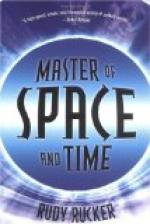The problem of increasing the rapidity of transmission has been met by various automatic systems of telegraphy, so called because they embody the idea of mechanical transmission with resulting gain in speed and other advantages. The number of these which have from time to time been devised is considerable. Not all have proven to be practicable, but those which have failed to prove in under actual operating conditions none the less display evidence of ingenuity which may well excite our admiration.
To mention one or two which may be interesting on account of the oddity of their method—there was, for instance, an early device, similar in principle to the calling apparatus of the automatic telephone, which involved the turning of a movable disk so that a projection on its circumference pointed successively to the letters to be transmitted. Experiments were made with ordinary metal type set up in a composing-stick, a series of brushes passing over the type faces and producing similar characters on a tape at the other end of the line. In another more recent ingenious device a pivoted mirror at the receiving end was so manipulated by the electrical impulses that a ray of light reflected from the surface of the mirror actually wrote the message upon sensitized paper, like a pencil, in a fair handwriting. In another the receiving apparatus printed vertical, horizontal, and slanting lines in such manner that they combined to make letters, rather angular, it is true, but legible.
These and other kindred devices are interesting as efforts to accomplish the direct production of legible messages. In experimental tests they performed their function successfully, and in some cases with considerable speed, but some of them required more than one line wire, some were too sensitive to disturbance by inductive currents and some developed other weaknesses which have prevented their incorporation in the actual operating machinery of to-day.
In the general development of the so-called automatic telegraph devices which have been or now are in practical operation, two lines have been pursued. One involves direct keyboard transmission; the other, the use at the sending end of a perforated tape capable of being run through a transmitting machine at high speed. One type of the former is the so-called step-by-step process, in which a revolving body in the transmitting apparatus, as, for instance, a cylinder provided with pegs placed at intervals around its circumference in spiral fashion, is arrested by the depression of the keys of the keyboard in such a way that a type wheel in the receiving apparatus at the distant end of the line prints the corresponding letter. This method was employed in the House and Phelps printing telegraphs operated by the Western Union Telegraph Company in its earlier days, and is to-day used in the operation of the familiar ticker. In another type of direct keyboard operation the manipulation of the keys transmits the impulses directly to the line and the receiving apparatus translates them by electrically controlled mechanical devices into printed characters in message form.




